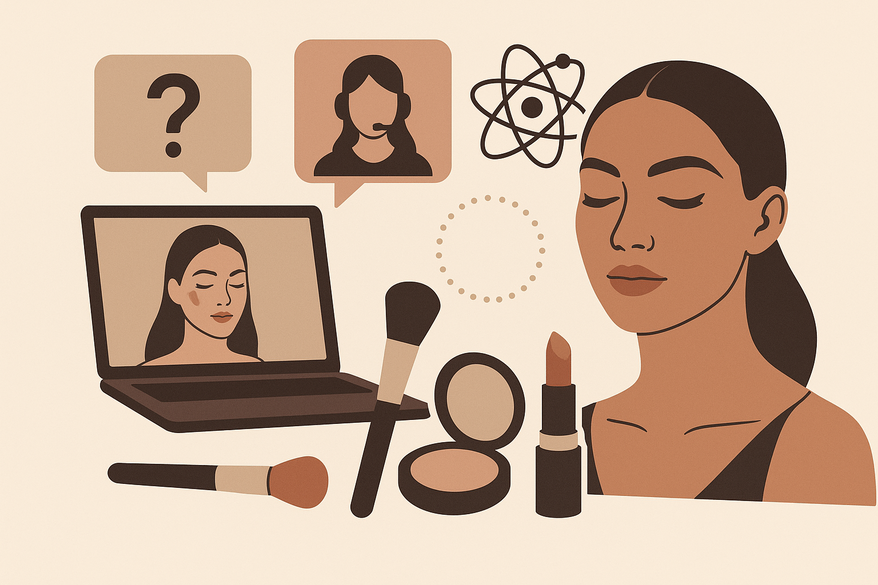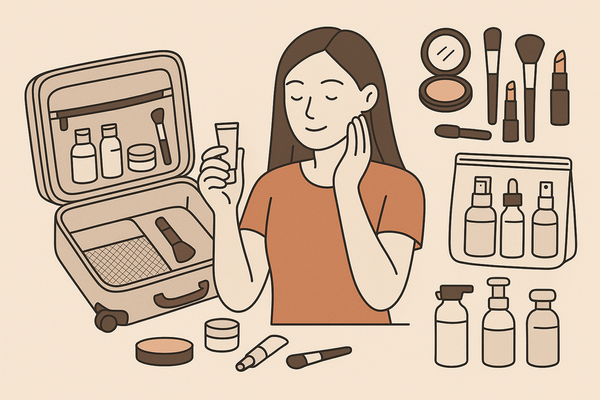Professional Makeup Advice FAQ: Expert Tips & AI Insights
Discover expert professional makeup advice FAQ and AI makeup generator insights for achieving flawless makeup. Elevate your beauty routine today.

Estimated reading time: 8 minutes
Key Takeaways
- Foundation mastery: Techniques for matching and blending across all skin types.
- Everyday routines: Quick, skin-friendly steps for a fresh, natural look.
- Pro tips: Blending methods, product selection, and prep for long-lasting wear.
- AI integration: How an AI makeup generator personalizes virtual try-ons.
- Emerging trends: From skinimalism to hybrid beauty products.
Table of Contents
- Section 1: Understanding Professional Makeup Advice FAQ
- Section 2: Expert Tips & Best Practices
- Section 3: Exploring AI in Makeup Advice
- Section 4: Integrating AI with Professional Guidance
- Conclusion & Further Reading
- FAQ
Section 1: Understanding Professional Makeup Advice FAQ
Professional makeup advice offers clear, expert-level guidance on products and techniques. Whether you’re a beginner or a seasoned artist, these insights help you build confidence and avoid common pitfalls.
Value for Beginners
- Foundation basics: Choose formulas for dry, oily, or combination skin.
- Tool selection: Brushes, sponges, and application tips.
- Product intro: Understanding primers, concealers, and setting powders.
Value for Experts
- Advanced blending: Multi-dimensional shadows and pigment layering.
- Specialist methods: Airbrushing, contour mapping, UV-safe makeup.
- Troubleshooting: Fixing patchy coverage, creasing, and uneven color.
Typical Challenges
- Creating a seamless base and mastering blend transitions.
- Selecting the right products for skin type, tone, and sensitivity.
- Balancing everyday routines with special-occasion looks.
- Preventing breakouts and irritation.
Real-World Example
A bride matched her foundation using neck-matching tips and avoided returns. On photoshoots, stylists swap heavy powders for mineral formulas to prevent flashback and color shifts under studio lights.
Industry Usage
Makeup schools and creative studios embed these FAQs in their curricula to ensure consistency and industry standards (URO Paris Guide, Beautify Tips).
Section 2: Expert Tips & Best Practices
Blending
Blending is the secret to a natural, seamless finish:
- Circular buffing: Small, round motions to melt product into skin.
- Windshield-wiper strokes: Back-and-forth on lids for even eyeshadow.
- Tapping motions: Press cream products without streaks.
A beginner who mastered circular buffing reported a flawless look on her first try.
Product Selection
Invest wisely to protect your skin:
- Neutral palettes for versatile eyes and lips.
- Non-comedogenic and hypoallergenic formulas.
- Seasonal rotations: lighter in summer, richer in winter.
Pro Tip: Swap powder foundation for a mineral alternative on hot days to reduce shine (source).
Skin Preparation
Prep is everything:
- Exfoliate 1–2 times weekly with gentle scrubs or fruit-acid toners.
- Hydrate with moisturizers suited to your skin type.
- Use targeted primers: pore-blurring or glow enhancers.
- Allow products to absorb before makeup application.
Artists often use sheet masks before events for extra hydration (FaceTreat Artistry).
Technique
Smart tools and motions:
- Dense stippling brushes for light coverage.
- Flat-top buffing brushes for full coverage.
- Damp sponges to blend creams and liquids.
- Thin layers to avoid cakiness.
Example: A fan brush removes fallout for a clean under-eye finish.
Trends & Emerging Methods
- Skinimalism: Minimal makeup with built-in skincare benefits.
- Hybrid products: Tinted sunscreens, lip-to-cheek sticks.
- Soft contouring: Gentle shadows over harsh lines.
- Dewy finishes: Lit-from-within glow.
- Clean beauty: Vegan, cruelty-free, eco-friendly packaging.
Major brands now use AI-backed shade finders to merge tech and trend (source).
Section 3: Exploring AI in Makeup Advice
An AI makeup generator is a digital beauty assistant that analyzes your photo—skin tone, landmarks, lighting—and applies virtual makeup in real time. It’s a game-changer for personalized guidance without trial jars.
How AI Works
- Face analysis: Detects eyes, nose, mouth, and contours.
- Color mapping: Matches products to undertones and skin type.
- Style library: Access thousands of pro and trend looks.
- Recommendation engine: Suggests by finish, brand, and budget.
Key Benefits
- Instant personalization: Custom shades in seconds.
- Time savings: No more endless in-store trials.
- Risk-free try-on: Experiment without commitment.
- Data insights: Track favorite colors and finishes.
Learn more about AI beauty advice at MakeupCheck AI Blog.
User Experience Example: A student uploaded a selfie, saw three foundation matches, tested nude lip shades, and shared before-and-after looks with friends.
AI Memory & Learning: The tool remembers past looks, building a digital portfolio for tailored future suggestions.
Privacy & Security: Choose apps that process images locally or use encrypted servers. Always read the privacy policy to protect your data.
Section 4: Integrating AI with Professional Guidance
Use Case 1: Virtual Try-Ons
- Snap a clear selfie in natural light.
- Upload to the AI makeup generator.
- Browse or customize looks: foundation, blush, eyeshadow.
- Save and share virtual makeovers with friends or your artist.
Use Case 2: Professional Consultations
- Artists load your virtual looks onto a tablet.
- They annotate images with product notes and technique tips.
- Clients compare daytime, evening, and event options side by side.
- Salon and bridal studios combine AI demos with live trials for efficiency.
Limitations:
- Texture nuance: Scars or fine lines may be overlooked.
- Undertone shifts: Colored lighting can confuse algorithms.
- Real-world feel: Texture, scent, and application still matter.
- Complex skin concerns need hands-on care (rosacea, eczema).
Conclusion & Further Reading
Combining expert FAQs with an AI makeup generator gives you the best of both worlds: time-tested pro advice and instant, personalized virtual try-ons. From shade matching and quick routines to blending mastery and emerging trends, you now have a complete toolkit.
Call to Action
Share your makeup success stories and let us know how AI has streamlined your routine.
Further Reading:
Try AI Beauty Apps:
FAQ
Q1: How do I choose the right foundation shade?
A1: Match to your neck and chest in natural light, identify undertones (warm, cool, neutral), test three shades on your jawline, blend, wait a minute, and check for lines in daylight. This method prevents costly returns.
Q2: What is a quick everyday makeup routine?
A2: In under 10 minutes: moisturize with SPF, apply tinted moisturizer or light foundation, spot-conceal, sweep neutral shadow, curl lashes with mascara, dust translucent powder, blend cream blush, and swipe tinted lip balm.
Q3: How do I avoid makeup-related breakouts?
A3: Use oil-free, non-comedogenic products; double-cleanse; disinfect brushes weekly; patch-test new items; and moisturize after removal to soothe skin.
Q4: What is the secret to long-lasting makeup?
A4: Prime based on skin type, blend foundation in thin layers with a damp sponge, set with translucent powder, and finish with a pro-grade setting spray. Opt for “long-wear” or “24-hour” formulas.
Q5: Do I need to follow trends, or can I create my own style?
A5: Use trends for inspiration—watch shows and blogs—then adapt colors and shapes to your features. Keep a mood board, practice at home, and blend trendy and classic looks for a personal twist.




